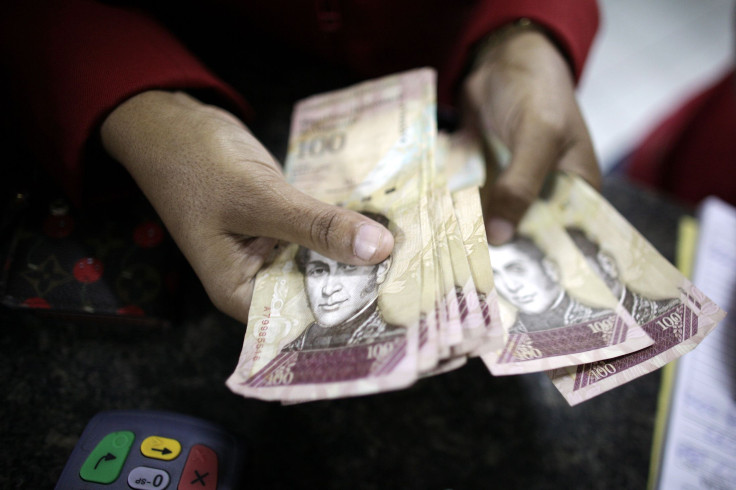Venezuela's Currency Sinks To Record Low On The Black Market

Venezuela’s currency, the bolivar, hit fresh lows this week on the black market, breaking a new record at 400 bolivars to the dollar. The currency has been rapidly tumbling in recent weeks on the parallel market, which many analysts consider a strong indicator of where the currency stands in light of stringent government controls and a severe scarcity of U.S. dollars.
The bolivar’s tumble broke the 400-to-1 exchange barrier Wednesday evening, according to website DolarToday, which monitors the currency’s rate against the dollar on the black market. That figure brings the currency more than 60 times the government’s primary official rate, required for most foreign exchange transactions.
The gap between the government’s official rate and the black market rate makes Venezuela simultaneously one of the cheapest and most expensive countries in the region, depending on whether a person has access to U.S. dollars. It’s also fueled arbitrage schemes, whereby importers take dollars reserved for goods purchases and immediately sell them to profit on the parallel market.
Venezuela’s black market for dollars emerged as a result of the government’s complicated web of currency and price controls, instituted under late President Hugo Chávez in 2003. The country’s shrinking foreign reserves, due in part to the drop in global crude oil prices last year, only intensified the situation.
The government runs three official exchange markets, each with its own rate for different uses. The strongest rates, at 6.3 and 12 bolivars to the dollar, are reserved for priority imports, including food and medicine. Earlier this year the government replaced an existing third rate with a new exchange market, which currently trades around 200 bolivars to the dollar, and is reserved for others who don’t have authorization to exchange at the first two rates.
That third market, known as Simadi, was intended to be based on supply and demand and temper the weakening black market rate, but Venezuelans are reportedly still facing difficulties accessing dollars through that system. Meanwhile, the black market rate has fallen at an alarming pace in recent months as Venezuela’s foreign reserves dwindled. In February, it stood at around 190 bolivars to the dollar. In mid-May, it hit 300 bolivars to the dollar for the first time, barely a week before it reached the 400 mark.
It’s illegal to trade bolivars at the parallel rate, but the black market continues to thrive as U.S. dollars get harder to find. The black market rates are reported on DolarToday, a website that President Nicolas Maduro has accused of waging an “economic war” on the country.
Last month, Venezuela’s foreign reserves dropped to their lowest levels in almost 12 years, Reuters reported. The central bank also traded some of its gold reserves for $1 billion to pay off debt obligations, according to Financial Times.
Earlier this year the International Monetary Fund projected that Venezuela’s economy would contract by 7 percent in 2015.
© Copyright IBTimes 2024. All rights reserved.





















